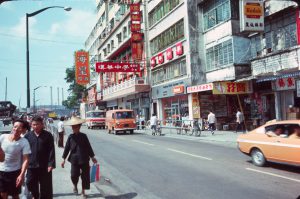
From the first two lectures, we have explored the correlations between architecture and film. Despite the differences in forms and context, both serve the purpose of conveying ideas and look into how people interact with spaces they thrive in every day. It is a commentary or documentary on the state of the city. Our everyday experiences and our perceptions of the city we live in are also influenced by film and architecture.
For instance, we find comfort in the architectural space of the building, receiving the feeling of security and protection. Similarly, according to the reading, Leaving the Movie Theater by Barthes, we seek solace from our plights in the “darkness of the cinema”. I agree with Barthes that the “absence of worldliness” in the darkness of the cinema has freed our souls by exposing ourselves to the anonymous darkness. In the movie theatre, the “space is familiar, articulated by furniture” that we are accustomed to.
Architectures are regarded as “the first visual evidence of a city’s putative identity” by Abbas in Building on Disappearance: Hong Kong Architecture and Colonial Space. He mentioned in his essay that by preserving the architecture, we are “keeping history in sight”. After reading his essay, the parallels between film and architecture have been drawn closer. I believe that both films and architectures are symbolic and closely related to the image and symbolism of a city. Both film and architecture are “visual art”, “developed alongside the modern city” as mentioned in Abbas’ essay. For example, in the Hong Kong comedy “The Private Eyes” released in 1976, Hong Kong architecture and the daily lives of Hong Kong people at the time is documented in the film, offering the audience a glimpse into Hong Kong in the 80s.